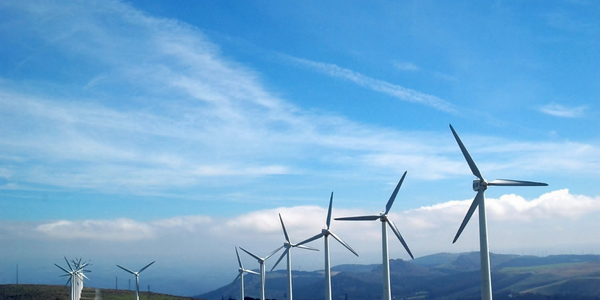The Russell Family Foundation's Journey to Net-Zero Carbon Emissions
Technology Category
- Functional Applications - Enterprise Asset Management Systems (EAM)
Applicable Industries
- Finance & Insurance
- Renewable Energy
Applicable Functions
- Procurement
Use Cases
- Asset Health Management (AHM)
- Continuous Emission Monitoring Systems
About The Customer
The Russell Family Foundation (TRFF) is a philanthropic organization founded by George and Jane Russell. TRFF is committed to investing for positive community impact and funds regional impact through community investment. The foundation is working to catalyze climate finance by modeling how to transition to values-aligned and low-carbon investment portfolios. TRFF joined the UN-convened Net-Zero Asset Owner Alliance (NZAOA) in 2022 and set an ambitious goal to achieve a net-zero portfolio by 2030. As a smaller investor, TRFF views the real-world impact of their decarbonization at the industry level and aims to model both operational and portfolio-level decarbonization strategies for other foundations, asset managers, and family offices.
The Challenge
The Russell Family Foundation (TRFF), a philanthropic organization committed to positive community impact, has set an ambitious goal to achieve a net-zero portfolio by 2030. This decision was made in alignment with their commitment to the UN-convened Net-Zero Asset Owner Alliance (NZAOA). Despite having already optimized its portfolio to be approximately 80% more carbon efficient than the MSCI benchmark through divestment from fossil fuels and investment in decarbonization technologies, TRFF recognized the complexity of the path to net zero. The challenge was not only about reaching their own net zero goal but also about setting an example for the broader philanthropic field. To achieve this, TRFF needed a comprehensive baseline of their carbon footprint, including all emission sources across their operations and their investment portfolio.
The Solution
TRFF selected Carbon Direct to calculate their carbon footprint and develop interim emissions reduction targets. Carbon Direct worked with TRFF to calculate a comprehensive footprint that captured all emission sources across their operations, including utility invoices, expenses, and business travel. They also collaborated with TRFF’s investment advisor, AlTi Tiedemann Global, to conduct a peer review of their financed emission footprint from their investment portfolio. AlTi developed a repeatable process to manage complex datasets that can translate expansive global investment portfolios into accurate financed emission footprints. Over 2023, TRFF will use the carbon footprint baselines from Carbon Direct and AlTi to set interim emission reduction targets. Strategies for emission reduction include evaluating goods and vendor services against sustainability criteria, transitioning to cleaner energy sources, reducing business travel, and implementing changes to their investment portfolio based on the assets driving outsized emissions.
Operational Impact
Quantitative Benefit

Case Study missing?
Start adding your own!
Register with your work email and create a new case study profile for your business.
Related Case Studies.

Case Study
Remote Monitoring & Predictive Maintenance App for a Solar Energy System
The maintenance & tracking of various modules was an overhead for the customer due to the huge labor costs involved. Being an advanced solar solutions provider, they wanted to ensure early detection of issues and provide the best-in-class customer experience. Hence they wanted to automate the whole process.

Case Study
Vestas: Turning Climate into Capital with Big Data
Making wind a reliable source of energy depends greatly on the placement of the wind turbines used to produce electricity. Turbulence is a significant factor as it strains turbine components, making them more likely to fail. Vestas wanted to pinpoint the optimal location for wind turbines to maximize power generation and reduce energy costs.

Case Study
Siemens Wind Power
Wind provides clean, renewable energy. The core concept is simple: wind turbines spin blades to generate power. However, today's systems are anything but simple. Modern wind turbines have blades that sweep a 120 meter circle, cost more than 1 million dollars and generate multiple megawatts of power. Each turbine may include up to 1,000 sensors and actuators – integrating strain gages, bearing monitors and power conditioning technology. The turbine can control blade speed and power generation by altering the blade pitch and power extraction. Controlling the turbine is a sophisticated job requiring many cooperating processors closing high-speed loops and implementing intelligent monitoring and optimization algorithms. But the real challenge is integrating these turbines so that they work together. A wind farm may include hundreds of turbines. They are often installed in difficult-to-access locations at sea. The farm must implement a fundamentally and truly distributed control system. Like all power systems, the goal of the farm is to match generation to load. A farm with hundreds of turbines must optimize that load by balancing the loading and generation across a wide geography. Wind, of course, is dynamic. Almost every picture of a wind farm shows a calm sea and a setting sun. But things get challenging when a storm goes through the wind farm. In a storm, the control system must decide how to take energy out of gusts to generate constant power. It must intelligently balance load across many turbines. And a critical consideration is the loading and potential damage to a half-billion-dollar installed asset. This is no environment for a slow or undependable control system. Reliability and performance are crucial.

Case Study
Remote Monitoring and Control for a Windmill Generator
As concerns over global warming continue to grow, green technologies are becoming increasingly popular. Wind turbine companies provide an excellent alternative to burning fossil fuels by harnessing kinetic energy from the wind and converting it into electricity. A typical wind farm may include over 80 wind turbines so efficient and reliable networks to manage and control these installations are imperative. Each wind turbine includes a generator and a variety of serial components such as a water cooler, high voltage transformer, ultrasonic wind sensors, yaw gear, blade bearing, pitch cylinder, and hub controller. All of these components are controlled by a PLC and communicate with the ground host. Due to the total integration of these devices into an Ethernet network, one of our customers in the wind turbine industry needed a serial-to-Ethernet solution that can operate reliably for years without interruption.

Case Study
Temperature monitoring for vaccine fridges
Dulas wanted a way to improve the reliability of the cold chain, facilitating maintenance and ensuring fewer vaccines are spoiled. Dulas wanted an M2M solution which would enable them to record and report the temperature inside vaccine refrigerators.

Case Study
Real-time In-vehicle Monitoring
The telematic solution provides this vital premium-adjusting information. The solution also helps detect and deter vehicle or trailer theft – as soon as a theft occurs, monitoring personnel can alert the appropriate authorities, providing an exact location.“With more and more insurance companies and major fleet operators interested in monitoring driver behaviour on the grounds of road safety, efficient logistics and costs, the market for this type of device and associated e-business services is growing rapidly within Italy and the rest of Europe,” says Franco.“The insurance companies are especially interested in the pay-per-use and pay-as-you-drive applications while other organisations employ the technology for road user charging.”“One million vehicles in Italy currently carry such devices and forecasts indicate that the European market will increase tenfold by 2014.However, for our technology to work effectively, we needed a highly reliable wireless data network to carry the information between the vehicles and monitoring stations.”


